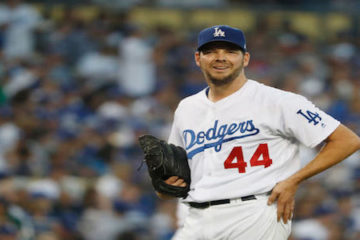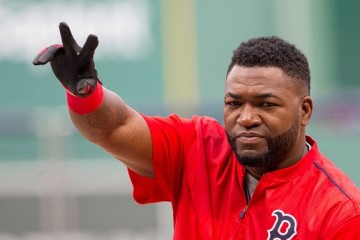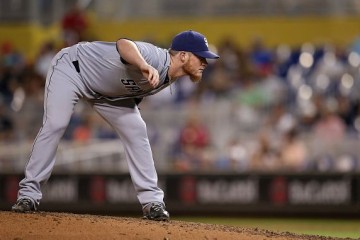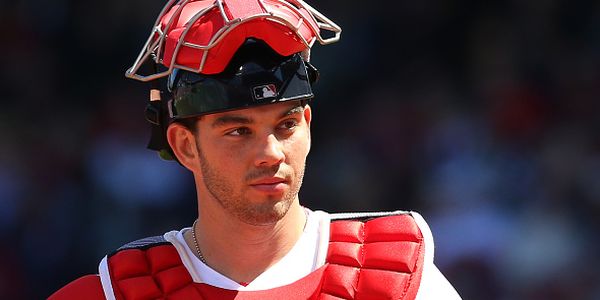45 Prospects in 45 Days: Boston’s Allen Webster
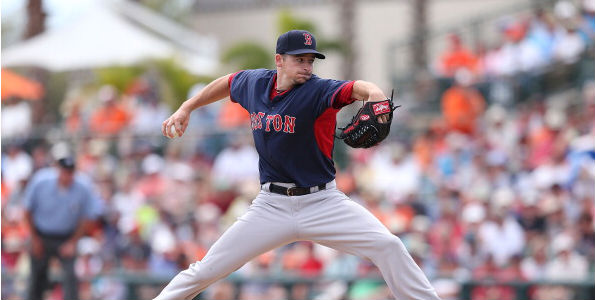
Profile
Allen Webster can bring the heat. In his short major league stint with the Red Sox last season, he averaged 94.4 miles per hour on his fastball, a velocity that would have ranked seventh among starting pitchers, if he’d had enough innings to qualify. His control is bad, verging on terrible, but that fastball will play on any level. Based on last year’s big league sample, Webster features faster gas than flamethrowers like Max Scherzer, Justin Verlander, and David Price.
Like Scherzer, Webster complements his heater with an excellent changeup. He uses it effectively against both lefties and righties, generating whiffs nearly a quarter of the time and generating ground balls at a rate solidly above league average.
You might be wondering why I haven’t mentioned Webster’s breaking ball yet. Unfortunately for him, it’s because there’s not really a breaking ball worth mentioning. He throws an occasional slider, almost exclusively to right handed hitters. It’s ok, but it’s really just a show-me pitch.
Even without a third pitch, the fastball/change combination was actually very effective against big league righties last season. Lefties, on the other hand, weren’t so impressed. They tuned up Webster’s heater for a .783 ISO and five home runs in 23 at bats.
Pundits
Webster only cracked the Top 100 prospects for one publication, Baseball America. Keith Law, Marc Hulet, and Jason Parks all left him off their top prospect lists. BA has him 88th:
Webster’s big league struggles last season likely dented his confidence, but he’ll need to have the conviction to pitch in the strike zone with his plus fastball and changeup when he gets another chance in Boston.
From the looks of it, Webster’s big league blow ups dented the confidence of prospect evaluators as much as anyone. He just missed Law’s Top 100, mostly because Law isn’t confident in Webster’s ability to succeed at the big league level without a reliable breaking ball.
Minor League Production
Webster’s results were up-and-down, but there’s a clear trend here. He takes a some time to get adjusted to each level, but once he settles in, he’s excellent. It’s happened at every stop from rookie ball up through Double-A. As terrible as his short stint in with the Red Sox was last season, it’s much easier to tolerate if you think of it as an adjustment period.
Projections
Well, these are less than rosy…
Adjustment period or not, all three projection systems vociferously doubt the notion that Webster’s raw stuff is enough to overcome his shaky control. The strikeout rates are probably a bit too cautious, but it’s really tough to disagree with an ERA somewhere between 4.50-.500, given his lack of even an average breaking ball to keep hitters honest.
Prediction
He’s not being drafted much, even in AL-only leagues, and I think that’s just fine. He isn’t projected to break into Boston’s Opening Day rotation (he’s already been optioned to Triple-A) and I don’t see that changing until rosters expand in September. He’d have to beat out Felix Doubront for the last rotation spot, and Doubront is essentially a more proven, left-handed version of the pitcher Webster projects to be; Webster would have to be untouchable in Triple-A to overtake him. An injury could open the door to a rotation slot, but I’d expect somebody like Brandon Workman or Rubby De La Rosa, both of whom are still in major league camp, to get the call before Webster. His two-pitch combination could play in a relief role, but I can’t imagine his control is going to get any better if he tacks a few MPH onto his heater. Plus, there’s no chance he’s sniffing any saves given the experience that’s already in place at the back of Boston’s bullpen.
Webster still has long term upside, but he’s not really in a position to contribute much fantasy value this season. He’s only worth consideration for deep AL-only dynasty formats.


